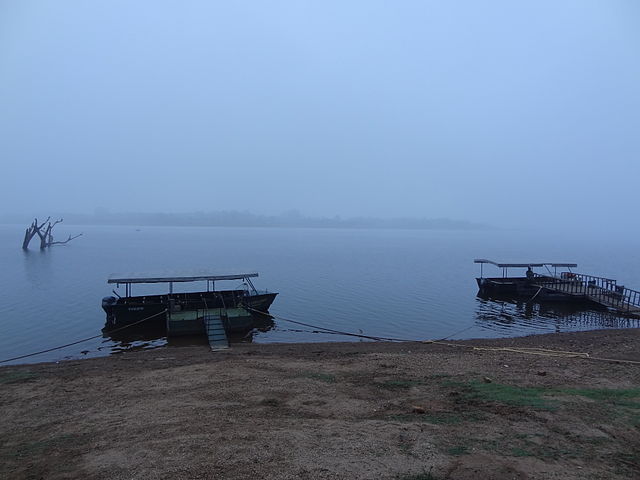Kapila bridge spans across the Kabini river in the Nanjangud area of Karnataka. It is located between Nanjangud town and Tandavpura. It is a gothic style bridge build in 1735 by Dalvoy Devraj and is one of the attractions of Kabini. Though it is known as a railway bridge, it actually dates back to the times before railways were established in India. It is famous for being the oldest railway bridge in India, around 286 years old! It is a heritage site and a well-visited tourist destination.
The Kapila Bridge: Architecture of the Past
The Kapila bridge, which is also known as the Kabini bridge is architecturally well-made using sand, stone, and bricks. Stonemasonry is not used well these days but this bridge is a great example of the architectural style popular in the past. The bridge has gothic style arches of around 8 feet in width and 10 feet in height, having 56 piers. The arches are topped with an earth slab of about 5 feet in thickness. The foundations are settled in rocks and built with lime concrete and mortar. The bridge is about 225 metres in length.
Historical Facts
Kapila bridge was originally built by Dalvoy Devraj during the East India Company era to connect Bengaluru with Mysore during their rule in India. The bridge was finished in 1735 and inaugurated on 17 August 1735. The bridge was constructed over the Kabini river. The bridge connects the districts of Mandya and Mysore. It was first built as used as a road bridge which was used to cross the Kabini river by bullock-carts, carriages, horses, cattle, and more. But in 1899, a narrow-gauge railway line was built on the bridge which spanned from Mysore to Nanjangud. This railway line was well in use until 2007 when the trains switched to a broad-gauge line and a new bridge was built on the river. On 17th January 2007, the bridge hosted its last train before it was closed forever.
Built without the use of iron, the bridge has remained intact and is still in good condition. At its foot are two big pools where travellers used to stop and bathe during the rainy season. Today, the Kapila bridge remains a delight to tourists because of its elegant gothic structure and its picturesque surroundings. It was declared as a Heritage Monument by the Government of India and is an attraction of Kabini for many tourists who like history and architecture.

You can take an auto or bus to reach the bridge. Bolgirikatta is a small village on the road to the bridge. From here, there is a transport office which also has a small restaurant on the premises. You can stop there for a quick bite to eat or drink. If you are coming from Bangalore, it’s a good idea to stay the night here. The nearby campsites are very good and offer accommodation for reasonable prices.
The Kabini bridge is one of the great historical tourist spots in the Kabini region and is surrounded by nature and its resources abundantly. Many animals and birds also visit the Kabini river to drink water and it is a beautiful place for pictures and a calm day out. The historical aspect of the bridge is also good for kids to learn. The structure itself is quite a site with stone and bricks laid over one another like a puzzle. Grand arches make the bridge seem very different from the modern bridges made up of cement and iron. Just being in the area and in the presence of the bridge will certainly have you taste a little history and make you wonder how it would have looked when it was first built.
The region surrounding Kabini is filled with flora and fauna and accommodations like resorts in Kabini like Red Earth Kabini, which is a sustainable and responsible place amidst the forest areas of the place. You can book a stay here and experience the natural beauty and serenity that Kabini has to offer.
Recently in August, it was reported that the Indian National Trust of Art and Cultural Heritage along with the Mysuru Division of South Western Railways are joining hands to restore and conserve the bridge across Kabini. A restaurant on wheels is also being proposed which will help boost the tourism in the region. When the project will be completed, the region will be much better for day outs and small picnics with family and friends. It is remain as a piece of historical architecture for generations to come.



